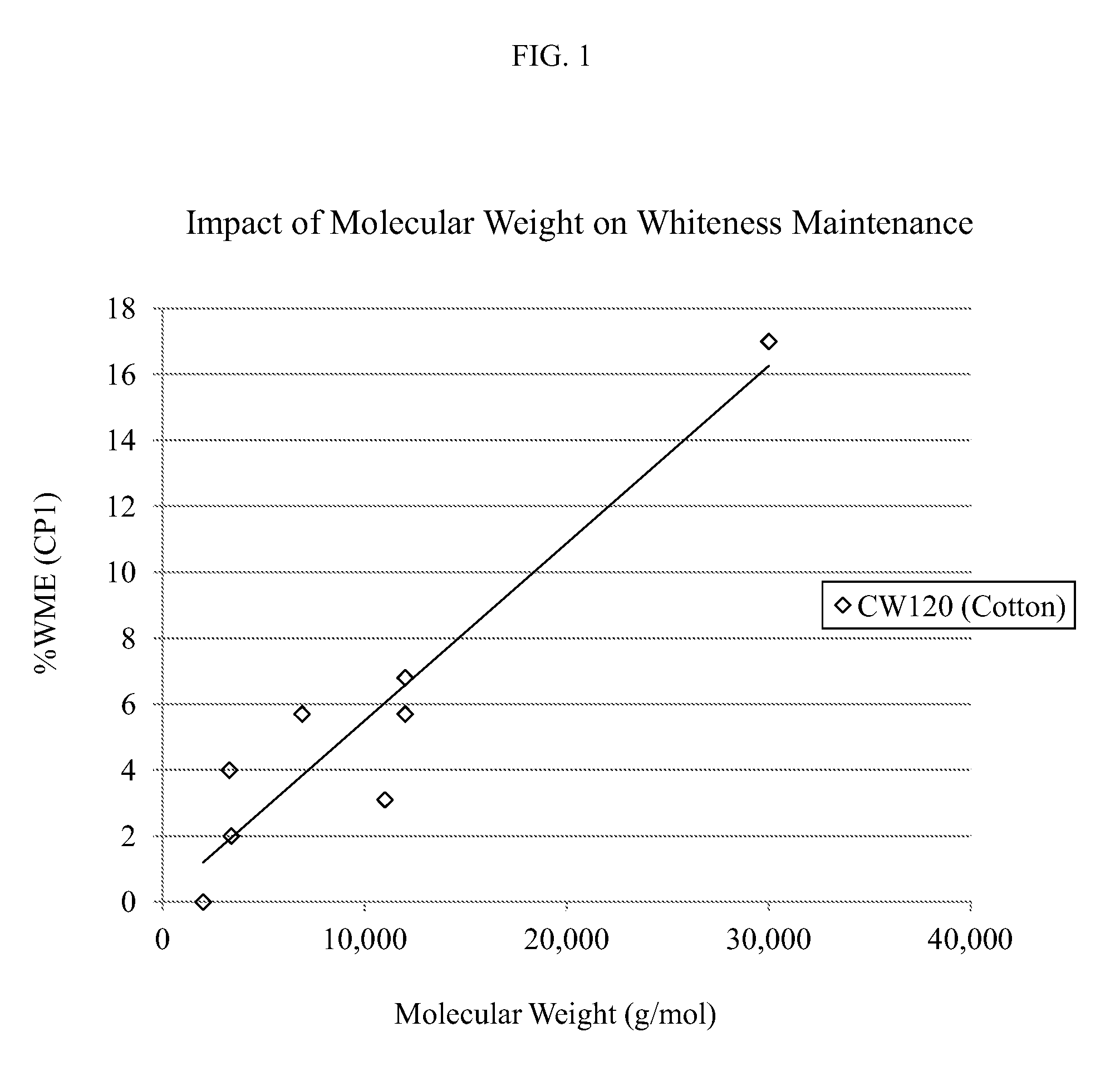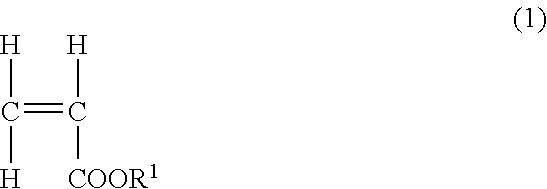Laundry detergents and cleaning compositions comprising carboxyl group-containing polymers
a technology of carboxyl group and detergent, which is applied in the direction of detergent composition, detergent dye, detergent compounding agent, etc., can solve the problems of negative impact on the appearance of whiteness, hence overall cleaning performance, additional challenges, and elevated water hardness levels, so as to improve the ability to resist soil repositioning and improve the cleaning performance
- Summary
- Abstract
- Description
- Claims
- Application Information
AI Technical Summary
Benefits of technology
Problems solved by technology
Method used
Image
Examples
example 1
Synthesis of the Carboxyl Group-Containing Polymers
[0403]The following carboxyl group-containing polymers in Table 3, were prepared by the methods disclosed herein, but can be synthesized by other methods known to one skilled in the art. Therefore, the following synthetic Examples serve to illustrate the methods used to synthesize the polymers and are not intended to limit the scope of the invention.
TABLE 3Properties of Synthesized Carboxyl Group-Containing PolymersWeight AverageStructure UnitStructure UnitMolecular WeightPolymer(a) Mass %(b) Mass %(g / mol)168%32%30,000270%30%39,000368%32%23,000
example 1a
Synthesis of Polymer 1
[0404]In a 1000 mL glass separable flask equipped with a reflux condenser and a stirrer (paddle blade), pure water (29.7 g) and Mohr's salt (0.0117 g) were stirred while heating to 85° C. Thus, a polymerization reaction system was built. Next, an 80% acrylic acid aqueous solution (hereinafter, also referred to as “80% AA”) (162.0 g), a 40% aqueous solution of sodium 3-allyloxy-2-hydroxypropanesulfonate (hereinafter, also referred to as “40% HAPS”) (174.5 g), a 15% sodium persulfate aqueous solution (hereinafter, also referred to as “15% NaPS”) (42.4 g), and a 35% sodium hydrogen sulfite aqueous solution (hereinafter, also referred to as “35% SBS”) (18.2 g) were separately added drop-wise through different nozzles to the polymerization reaction system maintained at 85° C., with stirring. The drop-wise addition times of 80% AA, 40% HAPS, 15% NaPS, and 35% SBS were 180 minutes, 120 minutes, 190 minutes, and 175 minutes, respectively. The drop-wise addition of each...
example 1b
Synthesis of Polymer 2
[0407]In a 2000 mL glass separable flask equipped with a reflux condenser and a stirrer (paddle blade), pure water (92.1 g) and Mohr's salt (0.0310 g) were stirred while heating to 85° C. Thus, a polymerization reaction system was built. Next, 80% AA (450.0 g), 40% HAPS (429.2 g), 15% NaPS (115.8 g), and 35% SBS (23.2 g) were separately added drop-wise through different nozzles to the polymerization reaction system maintained at 85° C., with stirring. The drop-wise addition times of 80% AA, 40% HAPS, 15% NaPS, and 35% SBS were 180 minutes, 120 minutes, 190 minutes, and 175 minutes, respectively. The drop-wise addition of each solution was continuously performed at a constant rate.
[0408]The resulting solution was maintained (matured) at 85° C. for 30 minutes after the completion of drop-wise addition of 80% AA. In this manner, polymerization was completed. After the completion of polymerization, the polymerization reaction solution was cooled with stirring, and ...
PUM
| Property | Measurement | Unit |
|---|---|---|
| Length | aaaaa | aaaaa |
| Fraction | aaaaa | aaaaa |
| Fraction | aaaaa | aaaaa |
Abstract
Description
Claims
Application Information
 Login to View More
Login to View More - R&D
- Intellectual Property
- Life Sciences
- Materials
- Tech Scout
- Unparalleled Data Quality
- Higher Quality Content
- 60% Fewer Hallucinations
Browse by: Latest US Patents, China's latest patents, Technical Efficacy Thesaurus, Application Domain, Technology Topic, Popular Technical Reports.
© 2025 PatSnap. All rights reserved.Legal|Privacy policy|Modern Slavery Act Transparency Statement|Sitemap|About US| Contact US: help@patsnap.com



